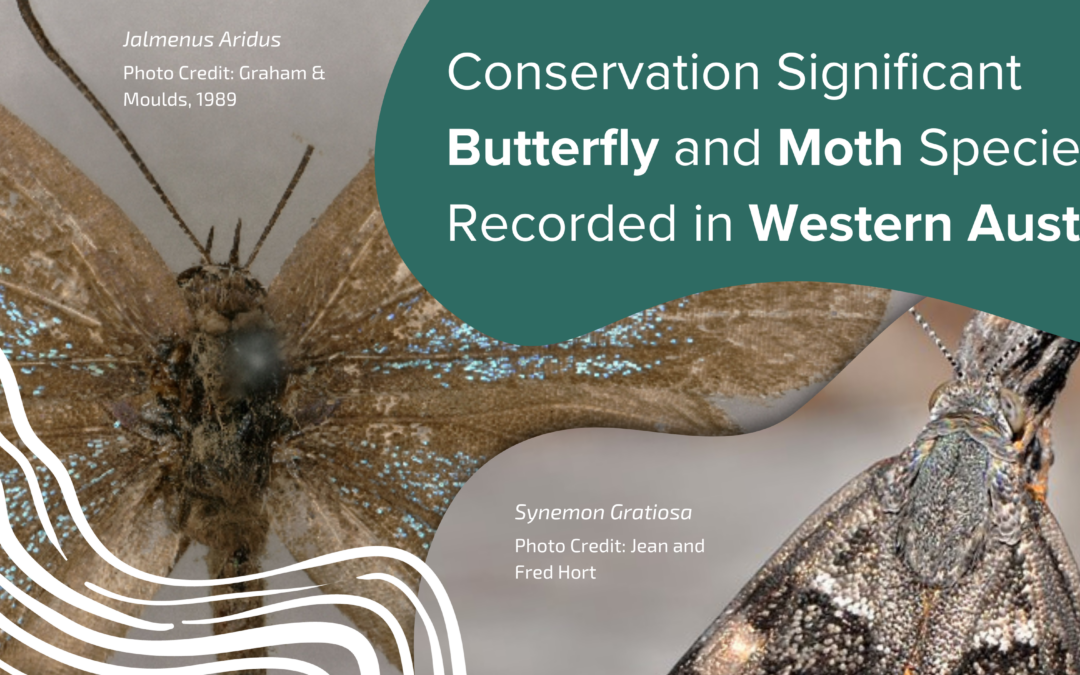Western Australia is home to three conservation-significant butterfly and moth species. These are Ogyris subterrestris petrina – the Arid Bronze Azure butterfly, Jalmenus aridus – the Inland Hairstreak / Desert Blue butterfly and Synemon gratiosa – the Graceful Sun-moth. Butterflies, moths and skippers are insects of the Order Lepidoptera, ‘lepido’ meaning scaly and ‘ptera’ referring to wings. Characteristics of this Order include the presence of two pairs of wings, covered in minute scales which give them colour (pictured in Figure 1) and tubular mouthparts for the uptake of liquids. There are two hundred species of Lepidoptera endemic to AUstralia (Britton, 2019) (WA Museum, 2017).
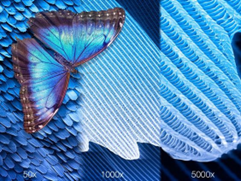
Butterflies from the Family Lycaenidae of Order Lepidoptera have a symbiotic relationship with other invertebrate species occurring in their preferred habitat. Myrmecophily meaning ‘ant love’ is the relationship between Lycaenid butterflies and ants (Perinchery, 2020). In Lycaenids the glands present and chemicals produced influence ant behaviour. Figure 2 Shows ant-lycaenid relationships. There are three main types of glands – Pore cupola organs, nectar glands and tactile organs.
Pore cupola organs are single-celled glands that secrete a pheromone which appeases ants to subdue aggressive behaviour.
Nectar glands are large organs that produce a liquid containing sugars and amino acids that ants feed upon.
Tactile organs are long cylindrical tubes that may attract or repel ants (Australian Museum, 2022).
Due to this interconnectedness, when investigating impact or management action not only do we need to consider the impacts directly to the species we also need to consider impacts to their symbiotic ant friends.
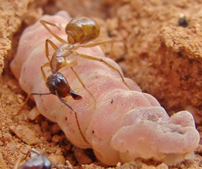
Ogyris subterrestris petrina (Arid Bronze Azure Butterfly) – Critically Endangered
The Arid Bronze Azure butterfly, Ogyris subterrestris petrina (Figure 3), commonly referred to as ABAB, is endemic to WA. The ABAB is listed as Critically Endangered under both the Environment Protection and Biodiversity Conservation Act 1999 (EPBC Act) and Biodiversity Conservation Act 2016 (BC Act) due to its fragmented distribution, having only two remaining subpopulations, pictured in Figure 4. Which has led to low species abundance. Critically Endangered as per the EPBC Act is a taxon “facing an extremely high risk of extinction in the wild” (EPA, 2023).
Adult butterflies have dark purple and brown wings, that span up to four centimetres. Habitat where extant subpopulations have been recorded are Eucalypt woodlands with an open understorey on red-brown loam soils (DCCEEW, 2015). This species is associated with Sugar ants, Camponotus sp. nr. Terebrans. Female butterflies lay their eggs inside sugar ants’ nests, the larvae are then protected by the ants who are rewarded with secretions from Nectar glands. Sugar ants’ nests are found in the roots of Mallee gum trees, most commonly, Eucalyptus salmonophloia (Figure 5). (Herbison-Evans & Crossley, 2020). Large colonies are required to support the ABAB (DBCA, 2020). The ABAB depends upon sugar ants for shelter.
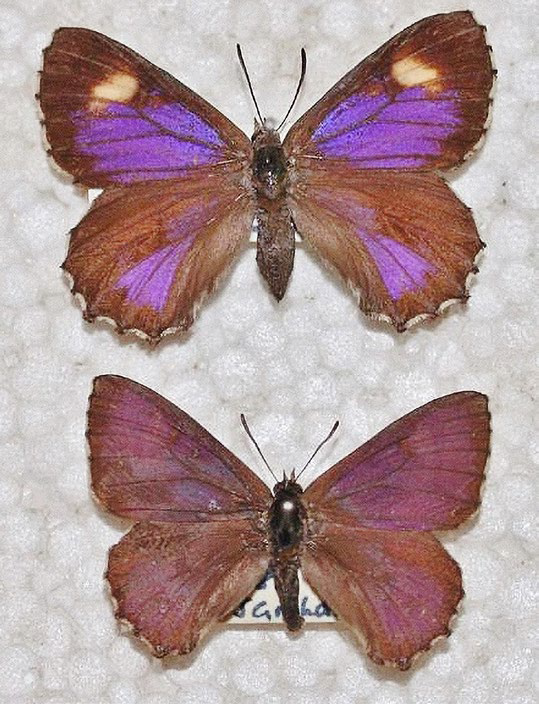
If a proposal requires an Environmental Impact Assessment (EIA) for the ABAB, an initial survey for host ants is required. If the host ant is present in reasonable numbers, then subsequent surveys for the ABAB are required (DBCA, 2020b).
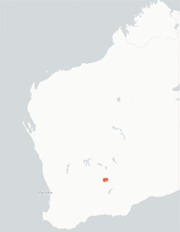
(Source – ALA, 2023).
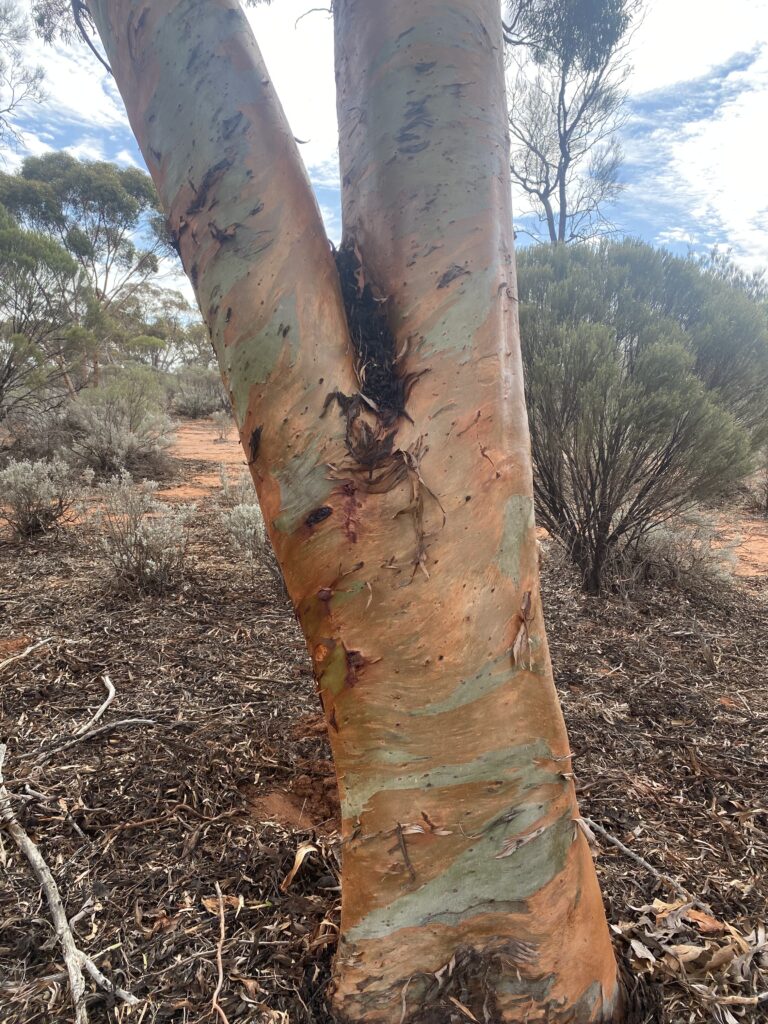
Jalmenus aridus (Inland Hairstreak / Desert Blue Butterfly) – Priority 1
Jalmenus aridus (Desert Blue butterfly – Figure 6) is also endemic to WA. Their preferred habitat is Eucalyptus salubris and E. salmonophloia woodlands (salmon gum), located near Kalgoorlie in the inland desert areas, see Figure 3. (DBCA, 2020). Adult butterflies have a wingspan of 2.5cm and can be identified by their dark brown coloured wings, accompanied by a large iridescent blue patch near the centre of each wing (Figure 6). The brown in the wings occurs due to the scales being pigmented with melanin and the iridescent blue patch is from light scattering off the minute scale’s microstructure as shown in Figure 1. (WA Museum, 2017). The caterpillars are two centimetres long, green with black heads and tails, and feed on the leaves and flowers of Senna nemophila and Acacia tetragonopylla (Figure 7). These plants are commonly associated with ants of the species, Froggatella kirbii. Only 13 records of Jalmenus aridus have been recorded since 1986 (ALA, 2023b). There is a lack of knowledge and documentation on this species thus it is listed as a P1, Priority Species by the Department of Biodiversity, Conservation and Attractions (DBCA) (A.J. Graham & Max S. Moulds, 2020).
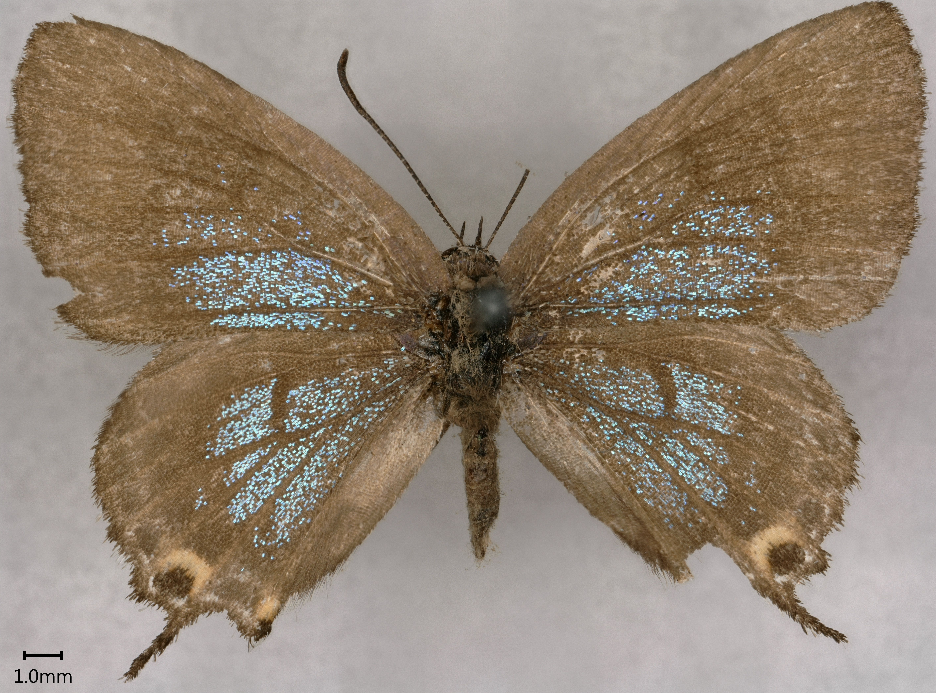
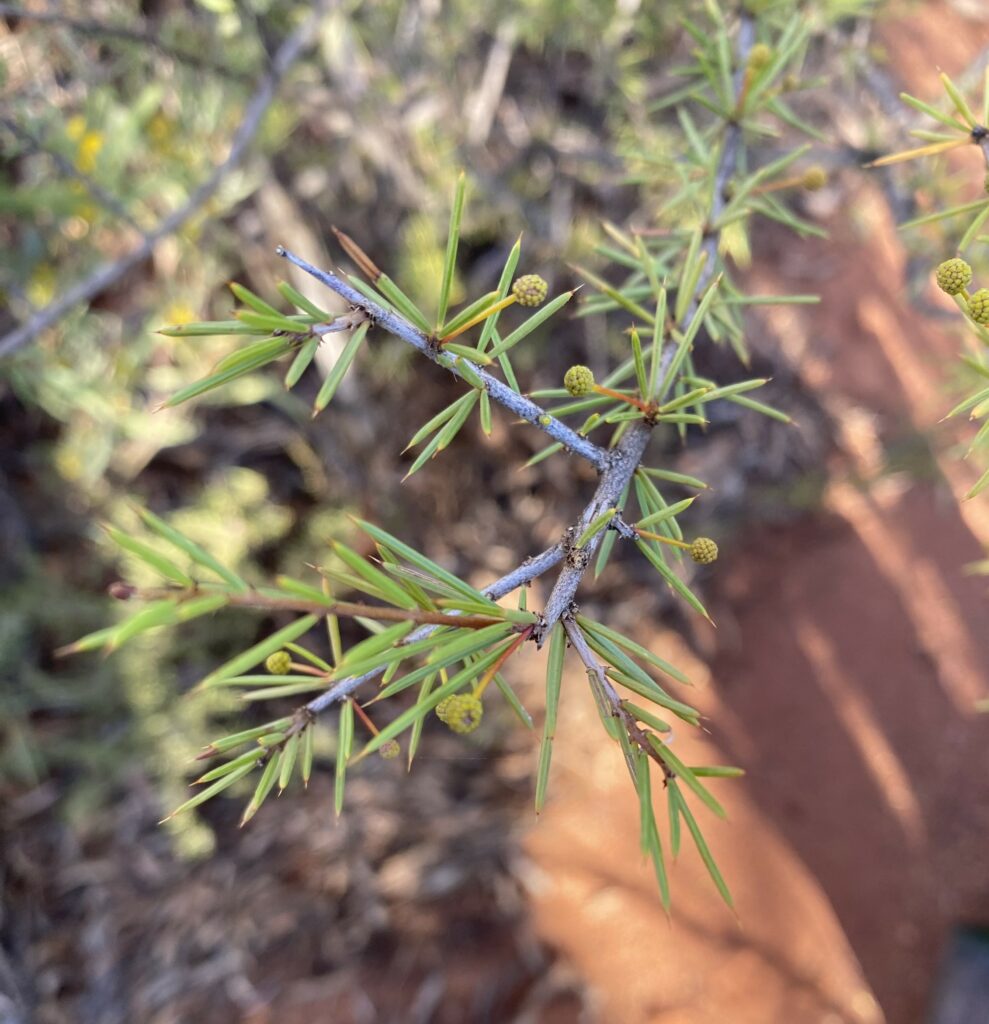
Synemon gratiosa (Graceful Sun-moth) – Priority 4
Moths are also in the Order Lepidoptera, of the Family Castniidae. The Graceful Sun-moth, Synemon gratiosa, pictured in Figure 8, is recognisable by its bright scarlet hindwings with contrasting dark forewings, that can span up to three and a half centimetres. The Graceful Sun-moth can be found along the South-West coast of WA, in coastal sand dunes and Banksia woodlands.

Within these areas are two species of mat rushes, Lomandra maritime and Lomandra hermaphrodita, on which female Synemon gratiosa lay their eggs (ALA, 2023a). Synemon gratiosa is recognised as a P4 priority species by DCBA.
Threats to Butterflies and Moths
Habitat for Ogyris subterrestris petrina and Jalmenus aridus is found near the historic mining city Kalgoorlie. Mining activity begun in 1893, that is 130 years of continual mining activity and development with no end in sight. Urbanisation of Kalgoorlie and mining activity has led to the habitat of Ogyris subterrestris petrina and Jalmenus aridus being degraded, cleared and fragmented. While urbanisation and habitat degradation along the South-west coast have contributed to Synemon gratiosa being listed as a Priority species. The impacts of a project must be carefully considered during the design and approval stage of a new development. Mitigation strategies or conditions may be employed to minimise environmental harm.
Legislation Protecting Conservation Significant Butterfly and Moth Species in WA
Environment Protection and Biodiversity Conservation Act 1999
Ogyris subterrestris petrina is listed as critically endangered under the Environment Protection and Biodiversity Conservation (EPBC) Act 1999. The EPBC Act is legal framework created to protect Australia’s environment, heritage and biodiversity. The Act may require proposals to undergo an Environmental assessment and approval process.
If a development has the potential to significantly impact the ABAB it should be referred to the Department of Climate Change, Energy, the Environment and Water (DCCEEW) for assessment. Penalties for impacting EPBC Listed species include fine of up to $1,110,000 for individuals or $11,100,000 for Corporations. Criminal penalties can result in 7 years of imprisonment (DCCEEW, 2023).
Biodiversity Conservation Act 2016
All three species are protected under the WA Biodiversity Conservation (BC) Act 2016. The BC Act 2016 is administered by the Department of Biodiversity, Conservation and Attractions (DBCA). The BC Act prevents threatened species being taken, disturbed or modified (BC Act, 2016) without approval. Violation under the BC Act can result in penalties up to $500,000 for individuals and $2.5M for corporations (DPaW, 2016). Species are categorised as Threatened or Priority, with other subcategories within.
The Ogyris subterrestris petrina is listed as Critically endangered species under the BC Act. A Threatened species “facing an extremely high risk of extinction in the wild in the immediate future” is considered a Critically endangered species.
Species that do not meet the Threatened species criteria or lack data are listed as Priority species by the DBCA. A species may be ranked as Priority 1-4, depending on their distribution and risk. Jalmenus aridus is a Priority 1: Poorly-known species meaning it occurs in few locations which are potentially at risk. Synemon gratiosa is a Priority 4: which are Rare, Near Threatened and other species in need of monitoring (EPA, 2018).
Environmental Protection Act 1986
The EP Act 1986, administered by the Environmental Protection Authority (EPA), the Department of Water and Environmental Regulation (DWER) controls land use and development in WA. Proposals likely to have significant impact on threatened and priority species, such as the three Lepidoptera species mentioned, require an Environmental Impact Assessment.
If your company would like assistance understanding environmental and biodiversity law in WA or understanding the impacts your activities may have on Threatened and Priority species, please contact us. Integrate Sustainability Pty Ltd has extensive experience with the legislative framework that protects Western Australia’s Threatened and Priority species. If you would like to find out more, please call 08 9468 0338 or email us at enquiries@integratesustainability.com.au.
References
A.J. Graham & Max S. Moulds. (2020). Jalmenus aridus. Retrieved from lepidoptera butterflyhouse: http://lepidoptera.butterflyhouse.com.au/lyca/aridus.html
ALA. (2023). Synemon gratiosa: Graceful Sun-Moth. Retrieved from Atlas of Living Australia: https://bie.ala.org.au/species/https://biodiversity.org.au/afd/taxa/fb531b39-fd0b-4afb-9115-5e4f4691cf7f
ALA. (2023). Jalmenus aridus: Desert Blue Butterfly. Retrieved from Atlas of Living Australia: https://bie.ala.org.au/species/https://biodiversity.org.au/afd/taxa/77afc9c9-8041-4c3d-b5d2-52b7c1387c41
ALA. (2023). Synemon gratiosa. Retrieved from Atlas of Living Australia: https://bie.ala.org.au/species/https://biodiversity.org.au/afd/taxa/fb531b39-fd0b-4afb-9115-5e4f4691cf7f
Australian Museum. (2022). Lycaenid butterflies and ants. Retrieved from NSW Government: https://australian.museum/learn/animals/insects/lycaenid-butterflies-and-ants/#:~:text=Many%20Australian%20members%20of%20the,attract%2C%20appease%20or%20reward%20ants.
Basu, D. N., & Kunte, K. (2020). Tools of the trade: MicroCT reveals native structure and functional morphology of organs that drive caterpillar–ant interactions. Retrieved from National Library of Medicine: https://doi.org/10.1038%2Fs41598-020-67486-5
BC Act. (2016). Biodiversity Conservation Act 2016. Western Australia.
Britton, D. (2019). Moths, butterflies and skippers: Order Lepidoptera. Retrieved from Australian Museum: https://australian.museum/learn/animals/insects/moths-butterflies-and-skippers-order-lepidoptera/
Chounding, A. (2023). Bellevue Gold fined $41,000 for causing environmental damage that left ‘salt scar’ on land. Retrieved from ABC News: https://www.abc.net.au/news/2023-05-01/bellevue-gold-limited-fined-after-flood-killed-vegetation/102284498
DBCA. (2020). Guideline for the survey of arid bronze azure butterfly (ABAB) in Western Australia. Retrieved from Government of Western Australia: https://www.dbca.wa.gov.au/media/2319/download
DBCA. (2020b). Arid bronze azure butterfly (ABAB) survey in Western Australia. Retrieved from Government of Western Australia: chrome-extension://efaidnbmnnnibpcajpcglclefindmkaj/file:///M:/Website_Insights/Insights/2023/08%20-%20August/Threatened%20and%20Priority%20Butterflies%20Found%20in%20WA/arid_bronze_azure_butterfly_survey_guideline_-_additional_information.pdf
DBCA. (2023). List of threatened and priority fauna by the Department of Biodiversity, Conservation and Attractions. Retrieved from Government of Western Australia: https://www.dbca.wa.gov.au/wildlife-and-ecosystems/animals/list-threatened-and-priority-fauna
DCCEEW. (2015). Conservation advice – Ogyris subterrestris petrina by the Department of Climate Change, Energy, The Environment and Water. Retrieved from Government of Western Australia: https://www.environment.gov.au/biodiversity/threatened/species/pubs/77743-conservation-advice.pdf
DCCEEW. (2023). Outcomes of compliance and non-compliance cases under the EPBC Act by the Department of Climate Change, Energy, the Environment and Water. Retrieved from Australian Government: https://www.dcceew.gov.au/environment/epbc/compliance/audit-outcomes
DCCEEW. (2023b). Environment Protection and Biodiversity Conservation Act 1999 (EPBC Act) by the Department of Climate Change, Energy, the Environment and Water. Retrieved from Australian Government: https://www.dcceew.gov.au/environment/epbc
DPaW. (2016). Major differences between the Biodiversity Conservation Act 2016 and the Wildlife Conservation Act 1950 (and, as relevant, the Sandalwood Act 1929)1. . Retrieved from chrome-extension://efaidnbmnnnibpcajpcglclefindmkaj/https://www.dbca.wa.gov.au/sites/default/files/2022-10/Biodiversity%2520Conservation%2520Act%25202016%2520summary%2520table%5B1%5D.pdf
EPA. (2018). Conservation Codes for Western Australia Flora and Fauna. Retrieved from Environmental Protection Agency WA: https://www.epa.wa.gov.au/sites/default/files/Referral_Documentation/DWERDT480152%20%20App%206%20-%202020%20Western%20Australian%20and%20Commonwealth%20of%20Australia%20Conservation%20Codes%282%29.pdf
EPA. (2023). Conservation Codes for Western Australia Flora and Fauna by the Environmental Protection Agency. Retrieved from Government of Western Australia: https://www.epa.wa.gov.au/sites/default/files/Referral_Documentation/DWERDT480152%20%20App%206%20-%202020%20Western%20Australian%20and%20Commonwealth%20of%20Australia%20Conservation%20Codes%282%29.pdf
EPA. (2023). Legislation by the Environmental Protection Authority. Retrieved from Government of Western Australia: https://www.epa.wa.gov.au/legislation
EPA. (2023b). Environmental impact assessment by the Environmental Protection Authority. Retrieved from Government of Western Australia: https://www.epa.wa.gov.au/environmental-impact-assessment
EPA. (2023c). About environmental impact assessment. Retrieved from Government of Western Australia: https://www.epa.wa.gov.au/pages/about-environmental-impact-assessment
Graham, & Moulds. (1989). Occurrence 699143884. Retrieved from Global Biodiversity Information Facility: https://www.gbif.org/occurrence/699143884
Herbison-Evans, D., & Crossley, S. (2020). Ogyris subterrestris. Retrieved from Lepidoptera Butterfly House: http://lepidoptera.butterflyhouse.com.au/lyca/subterrestris.html
KCGM. (2020). About us. Retrieved from Kalgoorlie Consolidated Gold Mines: https://web.archive.org/web/20200108035101/http://www.superpit.com.au/about/about-us/
Lucas. (2023). FIFO influx with major projects to add pressure on Kalgoorlie-Boulder accommodation shortage. Retrieved from ABC News: https://www.abc.net.au/news/2023-08-19/major-projects-add-pressure-on-kalgoorlie-accommodation-shortage/102746348
Lucas, J. (2018). No end in sight for Australia’s longest-running gold rush on Kalgoorlie-Boulder’s Golden Mile. Retrieved from ABC News: https://www.abc.net.au/news/2018-08-30/no-end-in-sight-for-kalgoorlie-gold-rush-super-pit-125/10184396
Mukherjee, I. (2017). Nature’s Most Beautiful Optical Illusion: Butterfly Wings. Retrieved from jove: https://blog.jove.com/video/natures-most-beautiful-optical-illusion-butterfly-wings
Murray, M. (2020). What is a parasite? Retrieved from Australian Museum: https://australian.museum/learn/species-identification/ask-an-expert/what-is-a-parasite/
MVC. (2023). Ogyris subterrestris petrina Field 1999. Retrieved from Museums Victoria Collections: https://collections.museumsvictoria.com.au/specimens/1009021
Perinchery, A. (2020). Mongabay. Retrieved from How butterflies strike a relationship with ants using specialised organs: https://india.mongabay.com/2020/09/how-butterflies-strike-a-relationship-with-ants-using-specialised-organs/
WA Museum. (2017). A behind-the-scenes look at our butterfly collection. Retrieved from Government of Western Australia: https://museum.wa.gov.au/explore/galleries/behind-scenes-look-our-butterfly-collection-0
WABSI. (2022). Arid Bronze Azure Butterfly. Retrieved from The Western Australian Biodiversity Science Institute: https://wabsi.org.au/wp-content/uploads/2022/10/Arid-Bronze-Azure-Butterfly-WABSI-Report.pdf

